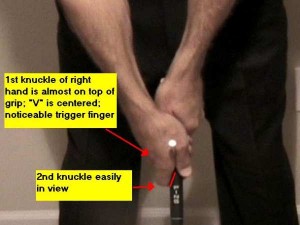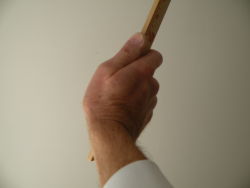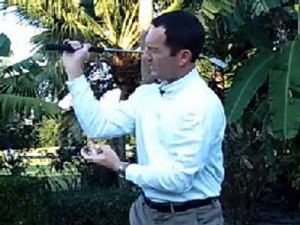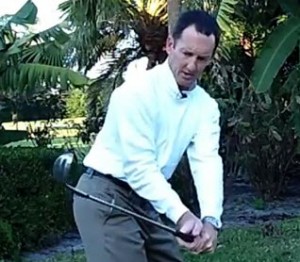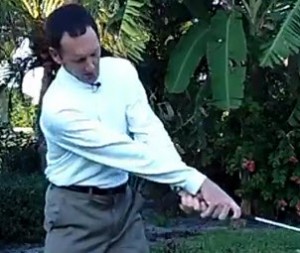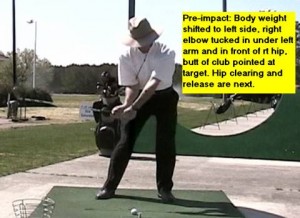“How to make the Golf Swing Takeaway” or “How to make a one piece takeaway” are two of the most commonly asked questions I get on my YouTube channel and here on my website. After grip and setup, the golf swing takeaway is one of the foundational elements of the swing that can ruin the rest of the motion if not executed correctly. Most amateur golfers will make some major mistake in the golf swing takeaway that leads to further swing plane errors in the backswing. This just cascades on into downswing and impact problems. In fact there are still a few misconceptions still taught today that we’ll cover in the remainder of this article. Watch the video here and then check the article below for more detailed instruction on how to make the golf swing takeaway and be sure to leave your comments below.
The Golf Swing Takeaway: Why “Low and Slow” is a Bad Idea
A recurring swing problem we still see that started in the “good ole days” of golf instruction is the mantra, “Sweep it back low and slow.” Unfortunately this style of takeaway sends the golf club “inside” and beneath the correct swing plane almost instantly. Once the club is too low and too far inside, then the player must recover by lifting the arms and club straight up to get elevation and hopefully get somewhere back near the ideal plane. However, this generally leads to further problems as the player crashes through the plane vertically on the way up and starts a type of “figure 8” loop that then comes over the top on the way back down.
Should the toe be up in the One Piece Takeaway?
Another popular misconception about the backswing and particularly the one piece takeaway, is the clubface position half way back. It has been taught for years that the “toe” should be straight up at the waist-high position in the takeaway. There is no simple way to say it … this is just plain WRONG! Watch the accompanying video on this page as I demonstrate how a proper one piece takeaway with no hand, wrist or forearm manipulation will send the club moving straight back onplane with the face tilted slightly downward at the waist-high position. The clubface in a proper one piece takeaway will appear slightly “closed” with a 10-15 degree tilt downward.
If the toe is straight up you have technically begun to “fan the face open” which is a manipulation of the hands,wrists, forearms and could be the sole source of your swing plane, clubface, casting and slicing issues. Scary, isn’t it? Who would have thought that many problems could result from one little takeaway error.
Other Golf Swing Takeaway Mistakes to be Avoided
- Picking the club up to the “outside” – this sends the club above plane and likely “laid off” at top of backswing
- Early wrist set – this can be achieved but is dangerously difficult to keep the club on plane
- Bowing the lead wrist – this will close the face prematurely and often send the clubhead too far inside while the hands themselves move outside
What are the keys to look for in a good takeaway?
So the secret to developing efficiency and repeatability in the swing is to start the golf swing takeaway online, going straight back and in one piece. The arms and club move as a single unit. Think of the arms as a solid triangle and with the club attached to that unit in the center of the stance, the arm/club unit now forms a large capital letter “Y.” The goal is to swing the “Y” back without anything bending or rolling until the club is parallel to the ground and the shaft is in a straight line roughly over the players toes.
A few final points of distinction to make are that the lead wrist (left wrist for right-handed golfer) will be “cupped” in the setup and takeaway and that the wrist does not hinge into a “flat” position until the latter part of the backswing. This surprises many golfers as it is well known that we advocate a “flat left wrist” in the golf swing. Note however that we swing into that position; we don’t start there. So the lead wrist is cupped at the start, still cupped at waist-high, and then as the swing rises above the waist-high position the flat left wrist will then come into play. Watch the YouTube Video on this page for all the key moves in the Golf Swing Takeaway and learn how to make the perfect one piece takeaway for your best golf ever.

